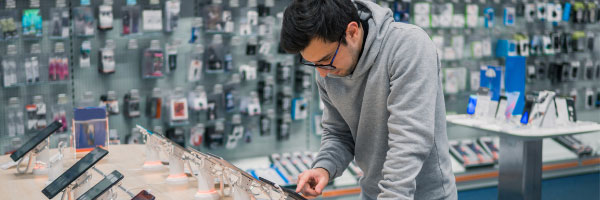6 Benefits of Smart Retail Technology During COVID Reopening
As the reopening of the world and retail outlets is slowly starting to take place, the newest mandates instruct all of us to proceed with caution. When retail stores reopen, they will face the challenges of implementing a new normal, including masks, social distancing, limiting the number of shoppers in the store, and maintaining a continuously clean and sanitized shopping environment. This will be a strange “new normal” for shoppers who like to touch, explore and test items before making purchase decision.
For retailers and business owners, the optimism of shoppers filling their stores once stay-at-home orders are lifted need to be tempered with realism. With uncertainty at an all-time high and disposable income at an all-time low for millions of newly unemployed people, the normal that will unfold will probably be quite different than what it was in the past.
COVID-19 has changed the way people evaluate, buy and interact with brands. For many, stay-at-home orders have led to a steep increase in eCommerce activity at the expense of brick-and-mortar retail. If eCommerce wasn’t something a consumer considered before COVID-19, it certainly is now.
It’s quite reasonable to expect activities like window shopping and casual browsing to be much less prevalent as consumers prioritize “essentials” and cut back on leisure shopping activities. For many, especially during the first weeks of reopening, trips to brick-and-mortar retail stores will largely be purpose-driven. Brands that streamline the in-store experience for purpose-driven shoppers should be rewarded with increased customer affinity and loyalty, while brands that provide sub-par experiences will lose out.
So, what does this mean for mobile operators? Before COVID-19 upended global retail, forward-thinking wireless carriers were already optimizing their brick-and-mortar locations for digital-first consumers with smart retail technology. Now that stores are starting to reopen, how can smart retail tech help carriers in a post-COVID retail environment?
1. Enable “Touchless” Shopping Experiences
Meeting new expectations concerning consumer health and safety has never been more important for all B2C brands, and according to a recent study by IPSOS, many brick-and-mortar retailers are falling well short of consumer expectations. Amidst this backdrop, brands that go above and beyond to ensure the health and safety of their patrons can earn lasting brand affinity. To help wireless carriers “wow” safety-conscious consumers, Smith Micro integrated patent-pending “touchless” technology into its smart retail platform ViewSpot.
2. Streamline the Path to Purchase at a Safe Distance
Smart retail tech also imbues display devices with interactive qualities that enable demo devices to “respond” to customer interaction and provide useful information such as device pricing, available data plans, and current promotions. By providing relevant information while a customer is exploring a device, carriers can remove friction from the in-store customer experience while transforming each display device into an additional sales associate.
3. Support a Consistent Omnichannel Experience
Traditional, printed price tags are a pain to keep up-to-date and don’t advance the perception of a digitally savvy business. Plus, printing, shipping, and posting in-store price cards is a clunky process that is error-prone. With features like dynamic digital pricing, smart retail tech eliminates the headache associated with printed price tags while making it much easier to maintain pricing conformity across online and in-store channels.
4. Maximize In-store Engagement
With features like content synchronization, smart retail tech helps carriers grab the attention of purpose-driven consumers by delivering engaging video content on every device. Blank screens add no value to the customer journey and generic OEM content is less than ideal and creates in-store visual clutter. Synchronized take-over moments provide a platform to amplify current promotions by encouraging customers to interact with in-store devices, which can speed the path to purchase for purpose-driven customers looking for something specific.
5. Optimize Operations and Resources
The behavior-based analytics provided by smart retail tech can also be invaluable to the task of resource optimization and cost control. Digital price tags eliminate the hard cost of printed labels and streamline a low-value task to free-up time for sales associates to add value in more strategic areas. Poorly performing in-store campaigns can be quickly identified and tweaked to boost effectiveness. In a similar manner, carriers can zero-in on effective campaigns and scale them across their footprint to maximize impact.
6. Perfect Planogram Strategy
Store layout is another area that can be improved with the help of the behavior-based analytics. What is the best place in the store for flagship devices? Do certain promotions elicit greater engagement if they are displayed on devices at the front of the store or back by the customer support desk? Smart retail tech can deliver this valuable insight.
Want to learn more about a proven smart retail platform deployed at a Tier-1 wireless carrier? See how Smith Micro’s ViewSpot platform can deliver results for your business in our post-COVID world or schedule a demo today.






